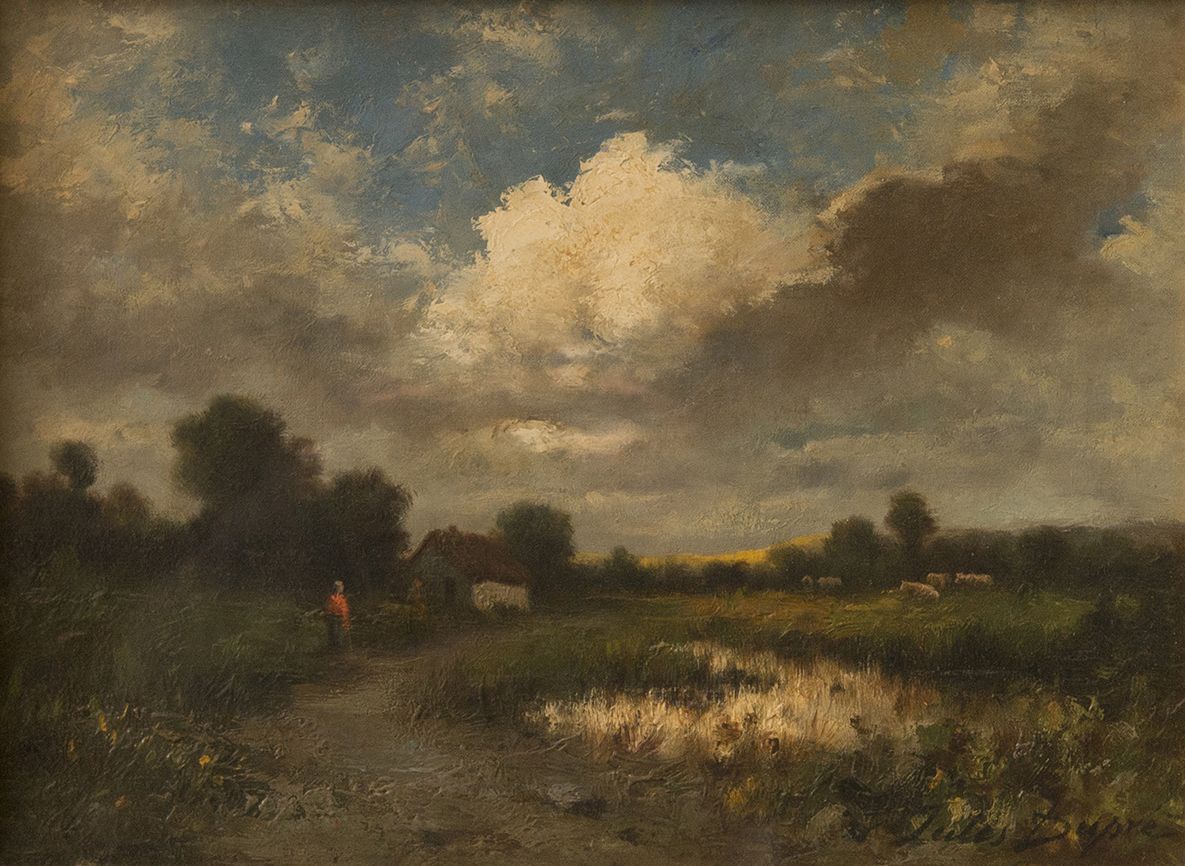Jules Dupré (1811–89)
Landscape with Woman in Red, c. 1880
Oil on canvas
McMullen Museum of Art, Boston College, 1988.399

Jeffery Howe
Professor Emeritus, Art History

This bucolic scene of a small remote farmhouse depicts an age-old mode of life far from the increasing urbanization and industrialization of modern Paris. Dupré was a leading artist of the Barbizon school, a group of artists in mid-nineteenth century France who emphasized scenes of nature and rural work to break away from the stilted classicism of academic art. Here he captures the late afternoon light with broad brushstrokes and rich color; his loose and personal style rejected the academic ideal of slick, polished surfaces that still characterized official painting.
Dupré was highly regarded in his lifetime; American collectors vied for his paintings, and fellow landscape painter Camille Corot (1796–1875) called him “the Beethoven of landscape.”
A hint of sunset glow in the distance is typical of his works. The bright, ragged clouds overhead are reflected in the reedy pond below, suggesting a unity of sky and earth. As with earlier Romantic artists, nature is a vehicle for expressing emotion. In the early 1830s Dupré had visited Britain where he admired the works of John Constable (1776–1837). The isolation of the single figure in red evokes the loneliness of rural life, especially for women of the era. A few cattle are the only other living creatures; the shifting drama of light and the changing seasons evoke the inexorable passage of time.
